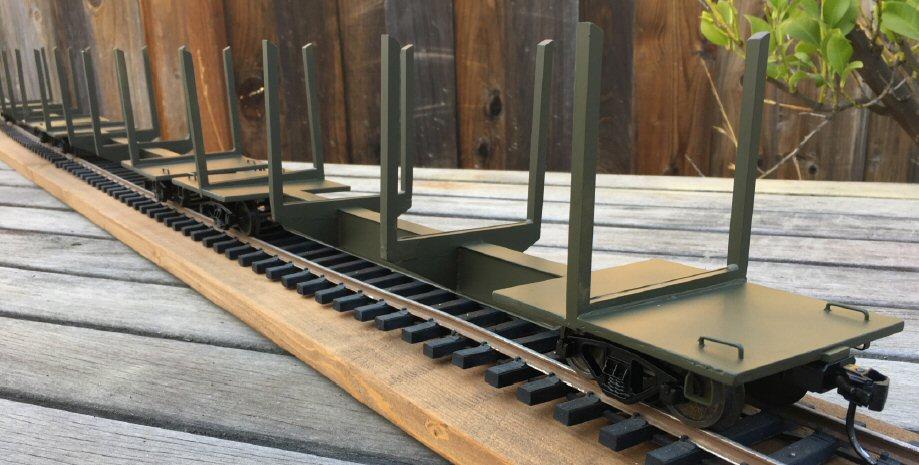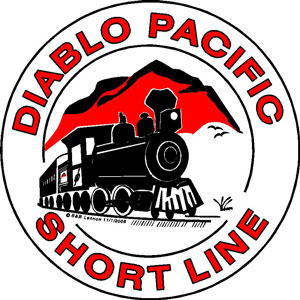| My Log Hauling Spine Cars |
|---|
| Bruce Jahn |
|
My quest to create a modern lumber/timber/log train has seen me watching a whole bunch of trains throughout the
Pacific Northwest. The variations of log haulers seems to be infinite. Almost as if every timber group builds
their own with whatever left-overs they have lying around.
I generally take plenty of latitude in my scratchbuilding since I really don't attempt to model one style but
allow myself the permission to blend what I've seen. I do though have a few styles I've followed more closely
and this has given me some design features to base my cars on.
The length of my cars need to fit into the DPSL "standard" size tub since the cars will most of the time be in
transit. In the case of these log haulers, I wanted to use a chunk of 1/2 x 1.25 aluminum I had in the stash
"out back" as the main spine. The length of bar happened to be 64 1/2" long, so cutting it into thirds produced
three 21 1/2" long spines, just right for the tubs.
Many manufactured trucks have their bolsters at different heights over the rail, so I needed to decide early
which trucks I'd use in order to machine the spine such that the coupler mount would be the correct height. I
like Accucraft trucks both for their metal (heavy) construction as well as nice rolling wheels, so that's where
I started. I then drew up a plan in Autocad to machine the spines.
|

|
|
|
Machining aluminum is fun and this photo shows the steps:
|

|
|
|
The arms needed to be rugged so I chose solid brass. The cross piece is 1/4 x 3/8" and the uprights are 1/4" square. I
found the correct stock at Sequoia Brass in Hayward. I first cut all 24 verticals 4" long. One end of every post
was cut at an angle just as the prototypes. To do this I set up two little chop saws, one a straight cut, the
other at the angle. I set stops so every post would be the same length.
|
|

|
|
|
I then cut 12 horizontals, also 4" long. I machined 1/4" steps in every end where the upright posts would be
attached then milled a 1/2" wide channel through the center where the horizontal member would rest on the main
center spine. I then machined a groove down the length of the member creating the outer raised portion of every
horizontal member just as the full sized members show.
|
|

|
|
|
I machined a random chunk of aluminum to hold the horizontal member at right angles to the vertical post and
silver brazed all.
|
|

|
|
|
After using CA glue to fasten all four arms to each spine, I added gussets on the center two arms made of 1/4"
thick acrylic held in place with CA. The trucks don't allow these gussets on the outer two arms, so I drilled
and inserted 1/16" brass pins for added strength.
|
|

|
|
|
The style car I liked included short decks on each end. These I made with .060 styrene attached with CA. I
added .125 styrene square to strengthen these decks held together with styrene adhesive.
|
|

|
|
|
After much filling and sanding of Liquitex modeling paste I added grab irons and steps made from .035 brash
sheet. Then it was off to the paint shop where they all got a coat of Tamiya TS-5 Olive Drab. I might add
decals someday, but I'm eager to get started on the chip cars, so those details will have to wait.
|
|

|



